Please feel free to interact with the map below by clicking on the
individual College / University pins, zooming in (Plus Sign) and zooming out (Minus Sign.)
individual College / University pins, zooming in (Plus Sign) and zooming out (Minus Sign.)
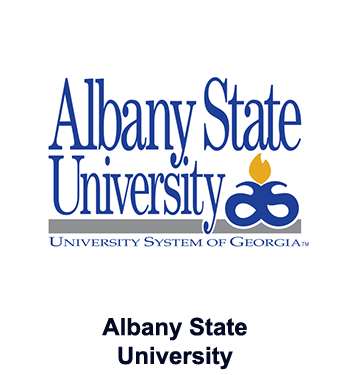
Albany State University - NASA-ROVER-AI-EYES
In support of NASA's Artemis initiative, our project's focus is the improvement of crater detection and classification systems used by Mars rovers through analyzing camera and sensor data and using Artificial Intelligence. Gathering this data about Mars can help AI create models that can be referenced to make valuable inferences about Mars' geology, which can assist researchers in planning landing spots or even finding signs of life. This year, our goal is to create an additional machine learning model that can interpret geologic data gathered from Mars which can be used by researchers in conjunction with our detection algorithms.

Albany State University - Space Jam
ASU's solution for sustainable Martian agriculture tackles water scarcity, limited sunlight, harsh soil, and low gravity. Our system combines solar concentrators and atmospheric condensers for water harvesting, with advanced LED and HID lights for optimal plant growth. We're introducing specific bacteria to enrich Martian soil and implementing a closed-loop nutrient system for soil regeneration. Centrifuge growth chambers will study the effects of reduced gravity on plants. This integrated approach aims for self-sufficiency in future Mars missions, marking a significant step in human extraterrestrial settlement and our journey towards a multi-planetary existence.

Bowie State University - Cyber Forensic Team
In response to the growing rate of satellite cyber-attacks, highlighting the vulnerability of satellite communications, we are addressing critical vulnerabilities in this vital sector. With over 3,000 communication satellites worldwide, satellite networks serve millions with essential services. Our project aims to use artificial intelligence (AI) to enhance security by simulating cyber-attacks with synthetic data, then training machine learning algorithms to detect these threats. This approach will help identify and counter malware attacks, unauthorized access, and other cyber threats across ground, communication, and space segments. Our solution adapts to evolving threats, ensuring uninterrupted functionality, and preserving space capabilities.

Bunker Hill Community College - Luna-tics
The goal of the Autonomous Swarm of Modular Robots (ASMR) project is to create a robust automated solution to increase productivity and assist in specialized lunar transportation tasks with minimal human intervention. The project aims to combine an adaptable software solution fitted with artificial intelligence along with providing a customizable robotic system capable of being equipped with application specific tools. By providing an autonomous solution we hope to optimize Artemis mission’s payload transportation and coordination while saving time along with other resources.

California State Polytechnic University-Pomona - Gliese-514b
Team Gliese-514b introduces a groundbreaking Aerial Unmanned Ground Vehicle (AUGV) tailored for the ARTEMIS Lunar Mission. Our AUGV is designed to navigate the moon's challenging terrains, merging aerial and terrestrial capabilities for optimal exploration. Pioneering a unique approach, we utilize reconfigurable computing platforms to calculate real-time energy consumption during mode transitions. This innovative solution ensures efficient energy use, enabling extended operational durations. Our renewed team composition, with diverse expertise, commits to bridging the technological gaps in lunar exploration, enhancing mission success potential, and charting a path for future interplanetary endeavors.

California State Polytechnic University Pomona - Kepler-452b
As the Artemis mission propels forward, ensuring the utmost security of its robotic elements is crucial. Our project aims to fortify communication between Unmanned Ground Vehicles (UGVs) and drones through a pioneering cryptographic framework, leveraging post-quantum algorithms, specifically Crystals-Kyber and SPHINCS+. These algorithms promise resistance against emerging quantum threats, ensuring encrypted, genuine, and tamper-proof communication in deep-space applications. Unlike last year's general security approach, this year's focus addresses the unique challenges of deep-space collaboration and the looming quantum vulnerabilities, paving the way for secure, efficient, and successful lunar explorations.

California State Polytechnic University Pomona - Kepler-1708b
Kepler-1708b is dedicated to enhancing the ARTEMIS mission’s security by implementing ad- vanced lightweight cryptography. Recognizing the mission’s unique challenges, a transition from the previously employed TinyJAMBU algorithm to the more efficient ASCON, based on sponge con- struction, is warranted. Leveraging reconfigurable computing platforms, Kepler-1708b aims to pro- vide optimal computational power tailored for se- curity needs in resource-constrained environments. A drone testbed will be employed to validate this approach, simulating the mission’s robotic elements and their communication patterns. The aim is to ensure robust, efficient, and secure communication for the mission’s critical mechanical components.

California State Polytechnic University Pomona - Keppler-22b
The Kepler-22b team presents an innovative flying telescope equipped with computer vision for the Artemis mission. This groundbreaking technology autonomously identifies and tracks distant galaxies, offering dynamic observational capabilities beyond conventional space telescopes. Paired with a smartphone application, it delivers real-time visual feeds, augmented reality overlays with celestial information, and seamless integration with the Artemis communication systems. Addressing current technological gaps, this project not only enhances space observation but also democratizes access to astronomical data, bridging the divide between experts and the general public. Our design redefines space exploration, making the universe more accessible and comprehensible for all.

California State Polytechnic University Pomona - Proxima_Centaurib2023
Proxima_CentauriB proudly presents the Artemis Ionic Thruster: a groundbreaking ionic propulsion system tailored for NASA's Artemis mission. Designed to overcome the limitations of traditional chemical propulsion, our thruster offers superior fuel efficiency and thrust, ideal for sustained lunar operations and beyond. Harnessing advancements in plasma physics, our scalable, high-efficiency engine aims to redefine space propulsion standards. With the Artemis Ionic Thruster, Proxima_CentauriB is set to revolutionize space exploration, ensuring safer, longer, and more cost-effective missions. Join us in making space travel more sustainable and accessible for all.

California State Polytechnic University Pomona - TOI-123b
TOI-1231b is developing a revolutionary aerial docking system named Skylink, designed to revolutionize drone operations. This system allows drones to exchange energy and data while flying, overcoming existing limitations like limited battery life and centralized data processing. The Skylink system extends drone operational times and enables real-time data analytics by forming a mobile edge-computing network in the sky. This advancement promises to transform drone usage across multiple sectors, including space exploration and terrestrial missions, by significantly enhancing efficiency and enabling immediate, on-the-fly decision-making capabilities.

California State Polytechnic University Pomona - Trappist_1e
Trappist_1e team introduces the Tesla Coil Drone, a groundbreaking integration tailored for NASA's ARTEMIS mission. This innovative aerial vehicle, equipped with a miniaturized Tesla coil, addresses key lunar challenges like electrostatic dust mitigation, real-time data collection, and enhanced mobility in lunar terrains. Designed to operate efficiently in the Moon's unique environment, the drone promises not only to bridge current technological gaps but also to bolster the success and potential of lunar missions. It stands as a testament to human ingenuity, pushing the boundaries of space exploration.

California State Polytechnic University Pomona - Wasp_39b
Team WASP_39b introduces the Artemis Transformer Drone, a groundbreaking innovation tailored for the challenges of lunar exploration. Merging aerial and terrestrial capabilities, our drone seamlessly transitions between flight and ground operations, addressing the Moon's diverse terrains. Designed for efficiency, durability, and autonomous navigation, it will significantly enhance exploration range, data collection, and astronaut assistance. With its adaptable wings and robotic arms, the Artemis Transformer Drone epitomizes the future of space exploration tools, poised to redefine lunar exploration during the Artemis mission and beyond.

California State University Fresno - The Bulldog Stress Assessment
The project aims to evaluate stress and anxiety levels in space using immersive virtual reality, aiming to simulate environments that challenge human perception. It uses physiological responses like electroencephalography to continuously assess stress levels. Virtual reality can be used to simulate real experiences for mission preparation, as people often experience stress in novel situations. The project adds EEG signal assessment to previous studies, ensuring methods to monitor and assess a person’s ability to perform tasks to their best abilities.

California State University Los Angeles - Cryogenic SpyderBot Swarms
The Cal State LA Cryo-SpyderBot Team will conduct ground-based research to create a new class of robotic hexapods and rovers that can swarm and move across lunar Permanently Shaded Regions (PSRs). The Cry-SpyderBots will be an autonomous swarming technology platform designed to facilitate the detection and collection of water ice using methods for In-Situ Resource Utilization (ISRU). The Cal State LA Cryo-SpyderBot Team concept aligns with NASA's Artemis Mission goal of sending humans back to the moon. The Cryo-Swarm Team will create a lunar science mobility scenario to transport a Cryo-SpyderBot, i.e., a cryogenically robust Hexapod, to lunar PSRs.

California State University Los Angeles - Cryogenic Unmanned Aerial Vehicle
The Cal State LA Cryo-Swarm UAV team will conduct ground-based research to develop a new class of unmanned aerial vehicles (UAVs) for operation in Lunar Permanently Shaded Regions (PSRs). The Cryo-Swarm UAVs will employ machine learning swarming algorithms, such that these Cryo-Swarm UAV swarms could conduct lunar surface operations to enable In-Situ Resource Utilization (ISRU), specifically through exploration and documentation of locations of lunar water-ice. Through this, the Cal State LA Cryo-Swarm UAV team concept supports the NASA Artemis Mission, which aims to return astronauts to the moon and establish a sustainable presence, i.e., a Lunar Base Station.

Clayton State University - LakerMinds
This project investigates how robots reason about uncertainty in support of decision making in unfamiliar and adverse environments. We accomplish this by equipping each robot with the probabilistic reasoning capability that allows robots collaboratively infer the best interpretation of the system under uncertainty.

Compton College - Team16
We propose a system of heat dissipation for use in surface lunar exploration. The current state of the art in heat dissipation in vacuum includes radiation, the use of liquid metals, and the use of gasses. Radiation has been shown to be too slow for many heat dissipation needs; thus the use of liquid metals and glasses. However, the latter two methods require the bringing of those substances on board the mission spacecraft from Earth; this can be prohibitively expensive. We propose simply to use the cold lunar regolith already on the moon to solve the heat dissipation problem.

Dominican University - STARS
In this updated concept, our focus remains on automating the monitoring of lunar conditions in order to maintain an ongoing process of harvesting sensor data. We have adjusted our concept to solely focus on lunar topography. NASA's pioneering projects necessitate cost-effective solutions, given recent budget reductions. Our official proposal, “Integration of LIDAR Technology for Self- Sufficient Lunar Sensors,” aims to contribute both scientifically and frugally to these initiatives. Our device would relay valuable topographic information to scientists. With a large-scale adoption of our device, a detailed, continually updated, topographic map of the lunar surface could be transmitted for analysis
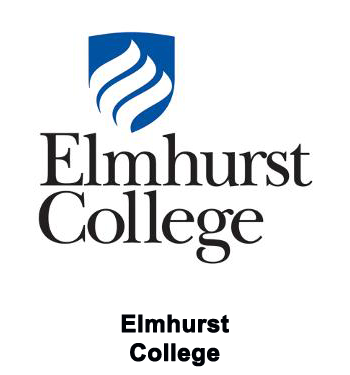
Elmhurst College - Blueshift
Space missions of extended duration pose a significant threat to the overall health of astronauts. Exercise motivation is an essential component in allowing astronauts to persevere through challenges and reach desired goals. This project seeks to improve the mental well-being of astronauts during the Artemis Mission. It represents a cutting-edge approach to addressing the mental health challenges faced during long-term space missions by developing a virtual reality based exercise platform integrated with gamification elements to enhance astronaut motivation and adherence to exercise routines. This project will create a framework for future developments in space exercise.
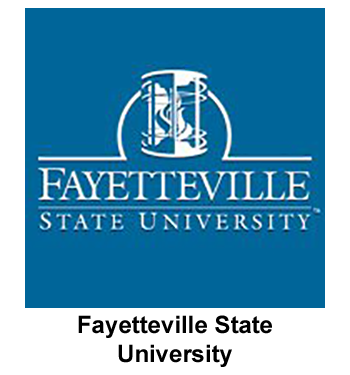
Fayetteville State University - ISL
Some of the issues outlined by NASA is that their current tracking system is heavily reliant upon ground control to assist crew members in locating items. Our solution provides an intuitive process of locating items within various spacecrafts and/or lunar habitats whilst keeping a running conditional status of each item. The program’s primary objective is to decrease complexity, confusion, and reliance upon ground control; through the use of RFID technology and a self-contained inventory tracking system integrated with spacecrafts. We believe our efforts support NASA’s Artemis mission by helping crew members save time that would otherwise be lost procuring items.

Fullerton College - Applied Engineering Club FJC
NASA astronauts often spend over 10 hours, sometimes days, searching for items in spacecraft, a major drain on mission efficiency. Fullerton College proposes an RFID-based tracking system to reduce this time by 90%. Our two-part solution includes antennas that initially pinpoint an RFID tag's general location, followed by a handheld device for precise guidance to the item. This novel approach greatly reduces the need for external computation, allowing for on-site processing. This streamlined system is set to revolutionize current inventory management in space, significantly boosting mission productivity and focus.

Georgia Gwinnett College - ASTRO Swarm
Astronauts need to gather information about the Lunar landscape as quickly and as safely as possible to discover potential minerals and build sites. ASTRO Swarm is designed to gather relevant landscape data by surveying the physical features of an area. Using our swarm robots, it will be possible to gather the relative altitude, position of landmarks, and environmental conditions present in a region. This data will then be used to map a coordinate grid of the surveyed region without using up the precious time and resources of the astronauts.
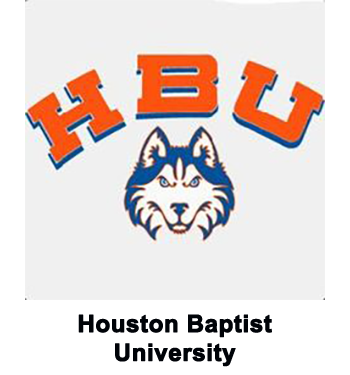
Houston Baptist University - REO
Mostly everything on the International Space Station (ISS) is done via barcodes and help from ground support to localize an item needed. We want to improve upon this technology and software by using an AI algorithm, known as a Graph Neural Network (GNN), to make the inventory tracking system faster with the help of RFID tags and RFID readers. Our end goal is to make everything processed within the ISS and minimize as much crew work as possible so they can focus on other eminent tasks on the spaceship.

Inter American University of Puerto Rico Bayamon Campus - Inter Space
Energy production is an essential part of any prolonged lunar mission. The primary source for energy in space is solar energy. Inter Space Division is looking to create energy using existing concepts but adapting it to space. We are working on a parabolic helium heat engine that will function under rough lunar conditions. The concept is simple, solar radiation will hit the reflective parabolic disk and it will be redirected into a concentrated energy beam that will heat a helium-based sterling engine that will produce energy for any needed application.

Mclennan Community College - Pleiades
The Sustainable Low-G Agricultural Methods for Demanding and Unusual Conditions (SLAM-DUNC) will allow NASA astronauts to grow agricultural products on the moon with the added benefit of near self-sustainability. One of the first steps of establishing a permanent human presence on a new land is to learn how to use the local materials for your own benefit. With SLAM-DUNC, NASA can comfortably use lunar materials to sustain their agricultural needs and save precious cargo space on resupply missions from Earth. This also saves NASA money in the long term because local production is cheaper than importing from Earth.

Metropolitan State University Denver - MSU IEEE Robotics Club
MSU Denver’s IEEE Robotics Club plans to build a smart, dust tolerant connector for transporting cryogenic fluids in lunar ground refueling operations. By iterating on current COTS connectors, we hope to improve design ergonomics, resistance to dust, and longevity in the harsh lunar environment. Our connector uses a burst of compressed gas sourced from a small amount of cryogenic boil-off will be used to flush out any potential dust buildup before and after connection, assuring a clean mating surface. It will include monitoring devices to transmit data such as flow rate and temperature to the crew.

Miami Dade College - Cosmic Aqua Innovators
Long-term space missions require water to be recycled to avoid resupply missions. Dormancy periods, in which space shuttles are unoccupied by astronauts, leave the Water Recovery System vulnerable to biofilm formation and bacterial growth, threatening astronaut health and machinery integrity. Our solution proposes stainless steel tanks with polymer-coated interiors featuring laser-etched microtopographies along with an antimicrobial UV-C light purification system. Our goal is to maintain water purity below 50 CFU/mL. Modifying a surface’s microtopography has shown promise in combating biofilm formation in applications ranging from dental implants to adhesive films that successfully protect medical surfaces from microbes.

Miami Dade College - MissionMethane
The Mission Methane team will address inefficiencies in methane production on the ISS and Mars by introducing a microchannel reactor system. Current methods are energy-intensive and need more viability. Our innovative approach optimizes material usage, compressing the Sabatier reaction into a compact machine. Building on Sabatier process principles, our microstructured reactor enhances efficiency, minimizes material consumption, and redesigns the machine for optimal energy-to-methane yield. The goal is a scalable, energy-efficient system that is economically and energetically viable for methane production on Mars, the ISS, or the Artemis mission

Montgomery College - MC UV
NASA’s current iodine-filtration system to purify water only focuses on bacterial growth control, leaving bacteria still in the water. To address this issue, Montgomery College Ultraviolet (MCUV) created a UV-C water purification system that cleanses water by irradiating harmful bacteria, terminating future microorganism growth. MCUV’s system is maintainable and efficient. While enhancing current systems, MCUV will test additional variables, including water temperature, water movement, water sources, and initial bacterial count, to determine the effectiveness of the system in retrieving 0 CFU/mL. MCUV hopes to bring the necessity of clean water for astronauts to maintain their health and well-being.

New Mexico Institute of Mining & Technology - Nitol Miners
The success of the Artemis Missions depends on the continued function and reliability of rovers. The current power sources for these rovers are heavy, expensive, and can be crippled by dust storms. A shape memory alloy motor, such as a nitinol motor, could be used in place of other power generators that are used on current rovers, allowing the rover to travel further in its lifetime and reduce the weight of the system. This motor would utilize nitinol’s ability to contract when heated by direct sunlight to rotate a shaft and thus produce power to the rover.

New Mexico Institute of Mining & Technology - NMT Plant Propagators
Regularly transporting food to lunar territory is expensive and impractical; instead, a sustainable farming system would provide a steady food supply. The NMT Plant Propagators team has taken on this challenge and designed a plant growth chamber to provide the needed nutrients and the environment plants need to thrive. The team has designed a chamber system which delivers aqueous nutrient solutions to a grid of hydroponic plant baskets through a drip-feed system, while Rhizobia and lunar soil provide nutrients to the plants directly. To ensure food sustainability, plants will be selected to maximize nutrients and calories.

New Mexico Institute of Mining & Technology - NMT Rolling Miners
The Fengari Captobot is a scorpion-inspired rover designed to further the intelligence of NASA MINDS by replacing the claws on the rover with simple, rotatable arms with interchangeable tools designed for excavation and sampling. The rover will be designed to excavate, sample, store, and return samples of ice, iron, and other precious metals inside the lunar rocks present in the crust of the moon to be further analyzed by astro-colonizers to gain intelligence of resources. Future, more expensive, iterations of the rover could be scaled up for permanent resource harvesting for lunar colonies.

Northeastern Oklahoma A&M College - NEO STEM Propagators
Currently noise levels, caused by hundreds of fans, motors and pumps, on the space station are too loud for astronaut comfort. As a matter of fact, noise levels often exceed current hazard levels of 85 decibels. This is above the sound of a freight train! The NEO STEM Club will develop acoustic panels that absorb this extra, unwanted noise. The design is inspired by the use of spray foam insulation in homes on Earth which is known for reducing sound. The goal of this project is to create panels that reduce noise in future Artemis missions by half.

Philander Smith College - PSU Panthers
Space missions grapple with a critical challenge: vibrations from astronaut exercises imperil both crew and spacecraft. Enter the Innovative Exercise Vibration Isolation System (VIS), a pioneering solution tailored for space. The VIS targets vibration mitigation in spacecraft exercise gear. Current tech, as seen on the ISS, dampens vibrations but falls short for future missions due to weight limits. Our proposed VIS disrupts this by slashing mass and offering top-tier vibration control. Utilizing cutting-edge materials like high-density composites and precision rubber isolators, it aligns with NASA's Artemis Mission, fortifying astronaut safety and spacecraft stability during workouts with unparalleled innovation.

Sonoma State University - Flying Seawolves
In 2017, Jet Propulsions Laboratory (JPL) introduced the Biosleeve Gesture Control, an innovative wearable tracking arm and finger motions, albeit constraining users to wear a sleeve for extravehicular activity. Although JPL's Biosleeve Gesture Control was an initiative for the Human Robot Interaction (HRI) the device had to be controlled by one person at a time. This significantly reduces the time of flight operation time. To solve the limitation, our research seeks to improve HRI by enabling hand gesture controls for unmanned aerial vehicle (UAV) and unmanned Ground Vehicles (UGV) which allow multiple users to control the UAV.

Sonoma State University - Seawolf
Irregular shaped water bodies can pose accessibility challenges for manual data collections by humans. Existing platforms can be expensive, this financial barrier prevents potential users from utilizing the device. Our solution deploys a fully open-source, minimal cost autonomous Unmanned Surface Vehicle (USV) to access and collect data in these areas frequently. Our on- board USV control system will consist of a flight controller, environmental sensors, Sound Navigation and Ranging, and GPS data to enable path-planning algorithms for surveying irregular shaped areas. Data will be recorded and stored on an SD module. The USV platform will provide mobility, usability, and reliability.

St. Thomas University - Bobcat Bots
Pioneering NASA’s vision for swarming robots, we plan to construct a network of miniature robots designed to autonomously tackle global tasks, starting with image capture and sample collection. Bridging technology gaps, our bots will leverage cost-effective, low-level hardware, incorporating an energy-efficient system that seamlessly switches between solar and battery power. A crucial feature ensures their return to base before battery depletion. Bobcat Bots, tailored for lunar and planetary surfaces, offer a promising solution to future exploration challenges. This project, aligned with the Artemis Mission, aims to minimize astronaut involvement, and maximize efficiency in data collection on extraterrestrial terrains.

Texas State University - The Bobcat CaerusCrete
To establish a permanent base on the Moon, we need a large quantity of building materials, preferably made from resources that we don’t have to bring from Earth. In the project conducted by the TXST Bobcat CaerusCrete Team, a concrete mixer is designed to process artificial lunar soil into concrete bricks for future landing pads on the Moon. The research conducted in this project can have a significant impact on NASA’s Artemis mission because it can provide methods of developing local building materials to prepare a place on the Moon for large rockets to land safely.

The University of Texas at San Antonio - The Rowdy Rocket Rovers
To aid in the Artemis Program’s mission of establishing a long-term presence on the Moon, we propose a sensing apparatus known as the “Sauron Unit” to characterize the many unknowns about the vast lunar environments. Our sensing apparatus will provide detailed 3D maps and information about the nearby resources to encourage In-Situ Resource Utilization. These maps will be generated through the utilization of LiDAR (3D imaging), laser spectroscopy, and various sensors such as barometers, thermometers, and Geiger counters to complete the task of mapping and characterizing the environment.

Tuskegee University - SafeSpace
SAFE-ES is designed to revolutionize astronaut health and spacecraft environmental monitoring during space missions, especially during extended durations. It expands non-invasive health monitoring, provides real-time environmental safety, integrates data for comprehensive analysis, and ensures rapid alerting. SAFE-ES integrates non-invasive and environmental sensors, advanced data processing, and guidance systems to enhance astronaut safety, and decision-making, contributing to the success of space exploration endeavors. Smartwatches have shown extraordinary capabilities to detect health and environment tracking. SAFE-ES plans to recombine, add, reverse engineer and enhance those features to make a watch-esque designed gadget which will be portable and effective for space travelers.
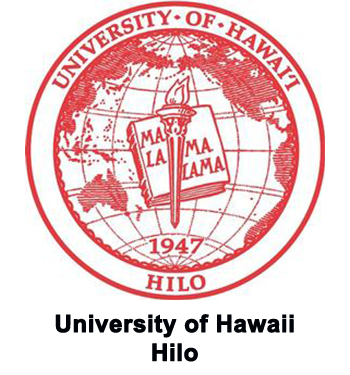
University of Hawaii at Hilo - Lunar Vulcans
We will investigate the proper levels of nutrients, lighting, and the best growth system for the Hawaiian Sweet Potato to produce a consistent and stable harvest for astronauts, The aim of this investigation is to create a robust and sustainable food system that will make it possible for Moon and Mars exploration while minimizing dependence on resupply missions. Thus, the goal of this particular proposal is to explore the methods needed to easily and reliably cultivate ‘uala on either the lunar or martian surface.

University of New Mexico - CHILI HOUSE
CHILIHOUSE is a multidisciplinary team whose goal is to innovate technologies to autonomously grow crop plants for Artemis missions. We will accomplish this goal by creating a dexterous robotic system inside the established APH and Veggie system. Plant health and water needs will be measured by sensors that our autonomous robots will use to make care decisions. We will also investigate the possibility of adding pollination probes and chlorophyll fluorescence sensors. Since New Mexico chile peppers have been grown successfully on the International Space Station, we will continue to use them in addition to strawberries and Arabidopsis.

University of North Texas - Flocking Eagles
Swarm robotics exhibit an array of diverse applications within the context of the Artemis mission. Irrespective of the specific application, meticulous planning and optimization of traversal routes coupled with seamless communication among individual robots assumes a pivotal role. Optimized cooperative route planning enables heightened operational efficiency, yielding a reduction in operational costs while elevating overall productivity. The significance of optimization extends to each robotic ensemble and an understanding of the intricacies of route selection fosters enhanced collaborative synergy. Consequently, the swarm attains a heightened capability to undertake intricate and multifaceted missions, transcending the limits of individual capabilities.

University of Texas at Austin in collaboration with Austin Community College - Mount Olympus
To push back against the absence of a detailed critical resource mapping on the lunar surface, A.R.E.S II vies to create a versatile robotics swarm designed for lunar exploration. These robots will autonomously navigate the terrain while simultaneously mapping the surface, relying on minimal direct communication. Two sets of three specialized robots will be made equipped for drilling, sensing water presence, or collecting samples. Together, the swarm will generate a map of the water concentration levels in a lunar crater to support upcoming manned missions by identifying optimal habitation sites determined by the density of critical resources.

University of Texas Rio Grande Valley - AlgaeCrete
As humanity continues to explore the possibilities of sustainable life beyond Earth, the concept of establishing an algae farm on other planets such as the Moon or Mars has gained significant attention. As various researchers concentrate on producing food, oxygen, and biofuels, our interest as civil engineering students lies in exploring additional potential applications for biotic sources. The research goal of this project is to investigate construction materials made of biologically precipitated calcium carbonate from biotic sources. To obtain biological building materials, different levels of heat and various chemical additives will be applied to biologically precipitated calcium carbonate.

University of Texas Rio Grande Valley - Vaqueros
As the Artemis mission is taking place, there is a limited number of tasks that astronauts can perform due to constraints such as lack of oxygen for prolonged exploration missions, the weight which limits the range of tasks that an astronaut is able to perform, and the flexibility to adapt to unforeseen tasks. The Modular Utility Lunar Endeavor (M.U.L.E.) resolves these problems by creating a rover that serves astronauts by having a modular body capable of being redesigned for various missions such as exploration, recovery, and research. As a result, the M.U.L.E. expands the astronauts’ work capabilities.

University of the District of Columbia - DC Posture
Exposure to low-gravity environments and body unloading cause a series of physiological adaptations including muscle loss and sensory degradation. These maladaptive changes make it difficult for astronauts to control their body movements, posing a significant risk during critical tasks with a low margin for error. Poor control of body movements in astronauts has been widely identified upon return to earth through assessing balance control. This project focuses on developing a novel apparatus to monitor and condition balance control which can be used both during and after space exploration missions.

University of the District of Columbia - ElectroMinds
Addressing lunar dust challenges, our project for NASA aims to develop lightweight, flexible electronic components integrated with the Electrostatic Vacuum Cleaner (EVC). The goal is to repel positively charged lunar dust, preventing adhesion to spacesuits during The Artemis Mission. Utilizing a cost-effective, ink combination of copper (Cu) and an organic solvent that will be deposited through Aerosol Jet Printing (AJP) allowing astronaut mobility. The electronic component enhances mitigation by repulsion while EVC provides vibration and filtration for particles. This strategic solution ensures astronaut safety and mission success through dust mitigation techniques.

